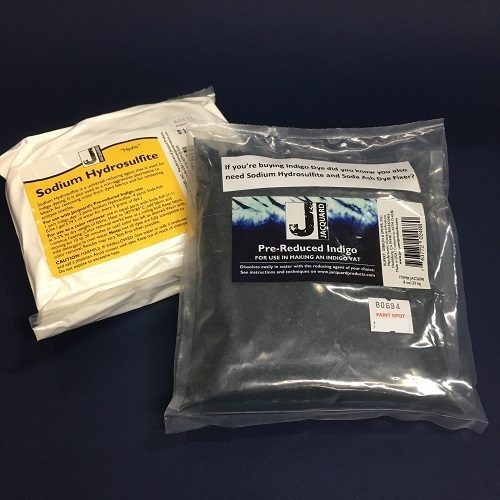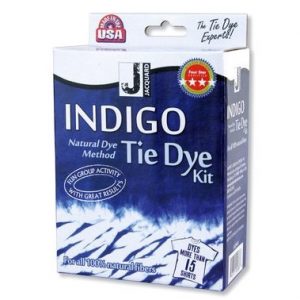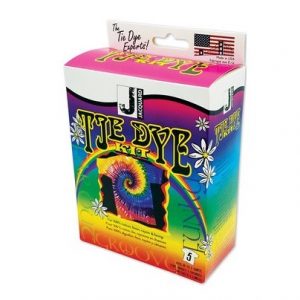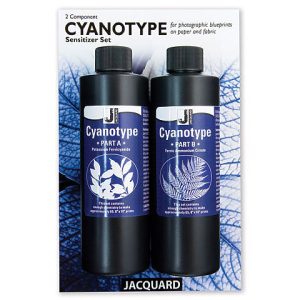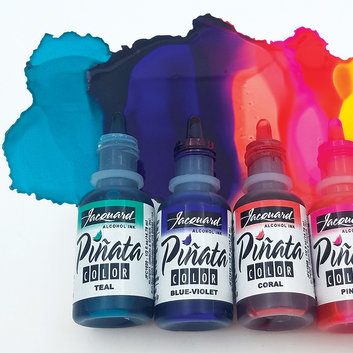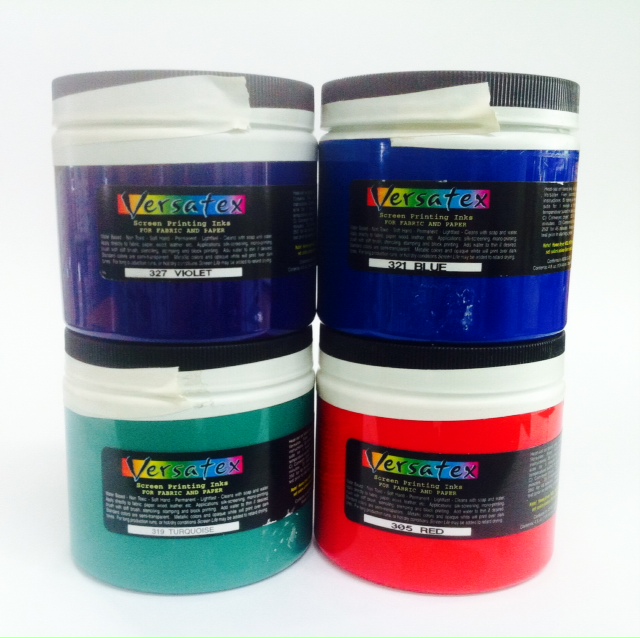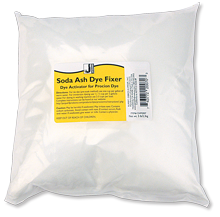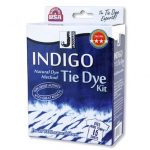Description
Jacquard Pre-Reduced Indigo & Sodium Hydrosulfite for Indigo Dye Baths
This specially formulated pre-reduced indigo is already 60% reduced, therefore, it allows you to use soda ash instead of lye in the dye vat.
Extremely easy to use, pre-reduced indigo makes setting up an indigo vat almost effortless. Because they dissolve easily in water, there is no need to paste up the indigo granules.
For Indigo Dying, you require BOTH the 8 oz Pre-Reduced Indigo Dye and 1 lb. Sodium Hydrosulfite.
Indigo exists in plants that grow all over the world. It is virtually the only blue dye that occurs in nature. With a fascinating history, indigo is equally fascinating to use: the blue color “magically” appears as dipped fabric is exposed to oxygen in the air! This unique property sets indigo apart from every other dye and makes it especially well-suited for patterning techniques. The dye produces a wide range of blues, from a pale sky blue to the deepest navy. Prized by countless cultures for millennia, indigo is still used today for coloring blue jeans. Jacquard’s synthesized indigo is molecularly identical to the naturally occurring dye and comes pre-reduced 60% for unprecedented ease of use.
See Instructions below or download the PDF Pre-Reduced Indigo Instructions.
For great visuals and practical advice, read our Blog Post: How to Host a Shibori Party
FABRIC/FIBER/SURFACES
All natural fibers including: cotton, linen, silk, canvas, hemp, wool, as well as wood and more.
- The general idea in keeping an indigo vat is that you want to keep the vat as oxygen free as possible. It is important to squeeze excess air from the fabric. It is also important not to splash the mixture while mixing or dyeing.
- Store the vat in an area where the temperature will remain between 68-85º F / 20-29º C (a comfortable room temperature). Keep out of reach of children and animals. Always store with the lid on the container.Keep in mind that the color is darker when wet.
Precautions: Do not use utensils or dishes used for eating. WEAR GLOVES.
Setting up an Indigo Vat
Gather all the items required and prepare a work area.The following recipe fits well in a 5 gal/18.93 L bucket:
Materials:
- 20 grams Pre-Reduced Indigo dye
- 50 grams reducing agent ( Sodium Hydrosulphite )
- 100 grams soda ash
- 4 gal/15.14 L warm tap water
- Natural fabric or yarn
- Rubber gloves
- 5 gal/18.93 L bucket with lid
- Stir stick long enough to reach the bottom of the container without having to submerge your hands.
Other helpful items:
- Shallow pan to place your fabric in while oxidizing
- Plastic sheeting to cover the area where you will have the indigo vat
Setting up the Vat
- Fill up the 5 gal/18.93 L container with 4 gal/15.14 L of warm tap water.
- While stirring, slowly empty the soda ash and reducing agent into the water.
- Empty the pre-reduced indigo dye packet into the water. Stir.
- Gently but thoroughly stir the vat going in one circular direction creating a slight whirlpool. Once the vat is well mixed, stop or slow the whirlpool by dragging the stir stick along the outer edge of the dye bath before slowly removing it. Cover the vat with a lid and allow it to settle for at least 15-30 minutes. For best results, wait one hour or longer for larger vats.
- After the vat is settled, remove the lid. The top of the dye bath may be covered with thin blue skin (rather than the traditional foamy ‘flower’). Wearing gloves, gently move it to the side. The dye bath should be a clear yellow or yellow-green color under the flower. If it’s not, then wait another 30 minutes and check again.
Dyeing
- Fold, tie or bind your garment.
- Thoroughly wet/soak your fabric in water.
- When you are ready to begin dyeing, remove the vat cover.
- Squeeze excess water and air out of your fabric.
- While still squeezing your fabric, slowly submerge your piece into the dye vat. Once the fabric is submerged, gently manipulate it to ensure that the dye will penetrate the unbound parts evenly. You may work the piece in the vat underneath the surface for one to several minutes in this way. Note: Do not drop the fabric in the vat and let it sink to the bottom. Residue that has settled in the vat will be stirred up and may cause spots on your piece.
- When you are ready to take the fabric out of the vat, squeeze it just below the surface as you slowly remove it. You want to prevent splashing because it introduces oxygen back into the vat. Fabric will be the same yellow-green of the vat. Slowly, fabric will begin to turn blue as oxygen in the air contacts it. Cover the vat.
- Set aside the fabric to allow the piece to completely oxidize. You may want to turn the piece and open up any areas that you want to turn blue. Let oxidize for about 20 minutes.
- If you’re satisfied with the color after letting the piece oxidize, rinse excess indigo from the piece. Then untie it and wash with a mild detergent such as Synthropol in warm water. To achieve a darker blue, repeat steps 4 through 7.
- When you’ve finished dyeing, use a stick to gently stir the vat in a circular motion. Place lid on vat and let settle for at least an hour before using again. The vat will keep for several days or weeks and you can use it several times.
- When you are ready to dispose of the vat, empty contents down the drain. Clean up bucket and utensils with a powdered cleanser or soap.
Tending an Indigo Vat
An indigo vat can have a very long life if used and tended to regularly. As mentioned above, the best type of container for a vat is a cylinder shape with a tight fitting lid. This will give you room to dye the fabric without it touching the bottom and minimize the surface area that is in contact with air. Occasionally, you may need to add more of the reducing chemicals and the pre-reduced indigo to keep the vat going.
Always try to dissolve the soda ash in a little water before adding to the vat. Start by adding a little at a time. Sometimes more than one addition is needed. When you add something to the vat, it is important to wait for the chemical reaction to take place (at least one hour) before adding more.
If the vat looks more blue-green than yellow-green, or if you see blue particles suspended in the liquid, the vat needs to be reduced more. Add 2-10 grams of reduction agent at a time.
If the color seems weak, or the liquid in the vat is gray and watery, an addition of the pre-reduced indigo is needed. Add 2-10 grams at a time.

